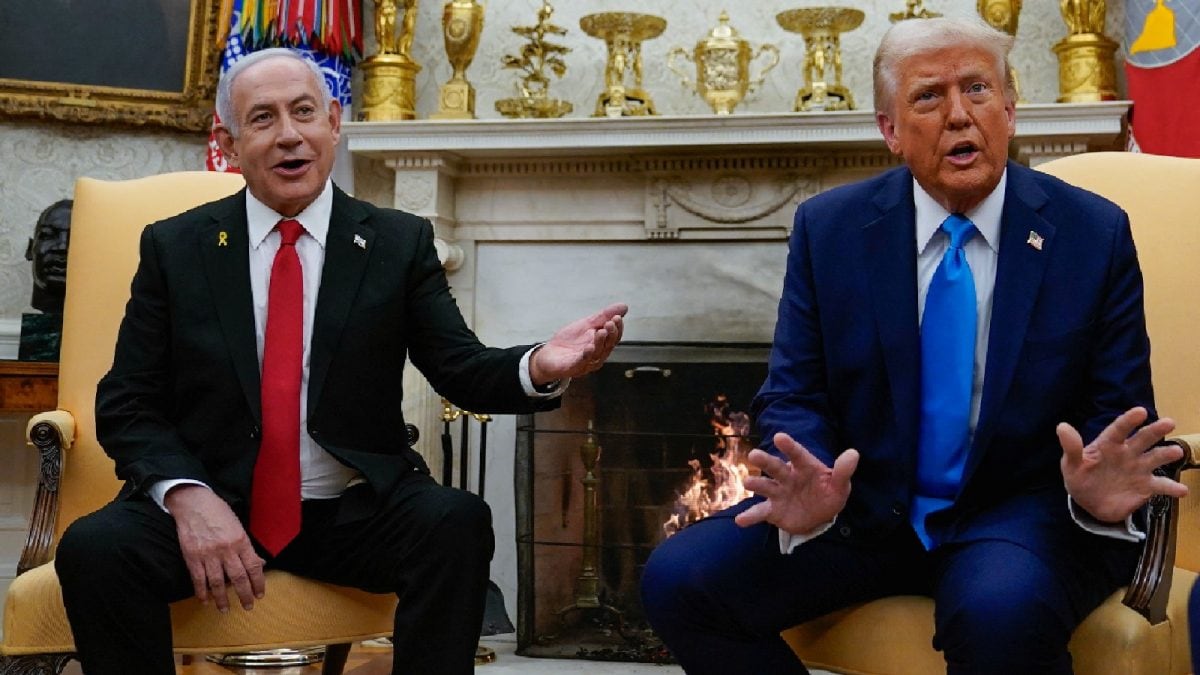Last Updated:June 30, 2025, 18:09 IST
Donald Trump claimed the US destroyed Iran's nuclear sites with bombs and missiles, but experts doubt the success due to the complexity of demolishing deeply buried bunkers

The US originally built just 20 of GBU-57 'bunker busters'. (Source: X)
“We razed them to the ground…" These thunderous words, repeated by US President Donald Trump and echoed by officials across the White House, have become the dominant refrain in the aftermath of US’ most aggressive aerial strike on Iran’s nuclear infrastructure in recent years.
But beneath the triumphant rhetoric lies a far more complicated reality. As the dust settles over Iran’s Fordo and Natanz nuclear facilities, experts are raising serious doubts over the actual success of the operation. Did the bombs truly destroy the deeply buried bunkers?
The US unleashed 14 GBU-57 “Massive Ordnance Penetrators", each weighing nearly 13,000 kg, alongside 30 Tomahawk cruise missiles, all targeted at Iran’s most fortified nuclear sites. These bombs, often described as monsters in the world of weaponry, are designed to plunge through hundreds of feet of reinforced concrete and steel before detonating. The White House hailed it as a “clean hit."
“Iran’s nuclear bunkers have now been razed to the ground. The American military power has once again shown the world what it can do…," said the US.
Yet defence analysts and military insiders remain unconvinced.
“The GBU-57 is formidable, but completely demolishing bunkers like Fordo, which is buried under a mountain, is far more complex," said a senior weapons analyst quoted in a report by nationalinterest.org. There may have been damage, but not obliteration, he said.
Adding to the concern is the rapidly shrinking inventory of the GBU-57s. The US originally built just 20 of these bunker busters. With 14 now reportedly deployed in the Iran strikes, only six remain. The Pentagon now finds itself staring at a logistical and strategic dilemma: if another strike becomes necessary, will the US be able to respond immediately?
This scarcity has accelerated calls within the US Air Force to retire the GBU-57 and develop a more advanced successor. What’s in the pipeline? A next-generation penetrator weighing roughly 10,000 kg, lighter than its predecessor, but enhanced with rocket-boost capabilities for stand-off launches, allowing pilots to strike from safer distances. Smarter, more agile, and less risky, the new bomb is intended to replace brute force with precision.
But this pivot raises uncomfortable questions: if the GBU-57 was as decisive as the Trump administration claims, why is there already a rush to replace it? Was the “mission accomplished" rhetoric more about perception than outcome?
Critics argue that the Fordo and Natanz facilities may still be operational, at least in part, and that the damage inflicted was not enough to cripple Iran’s nuclear ambitions. Moreover, the US now finds itself with limited capacity to follow through if those programs rebound.
Location :Washington D.C., United States of America (USA)
First Published:News world US B2 Bomber's 13,000-kg Iran Strike Faces Scrutiny As GBU-57 'Bunker Buster' Runs Low

 4 hours ago
4 hours ago

















